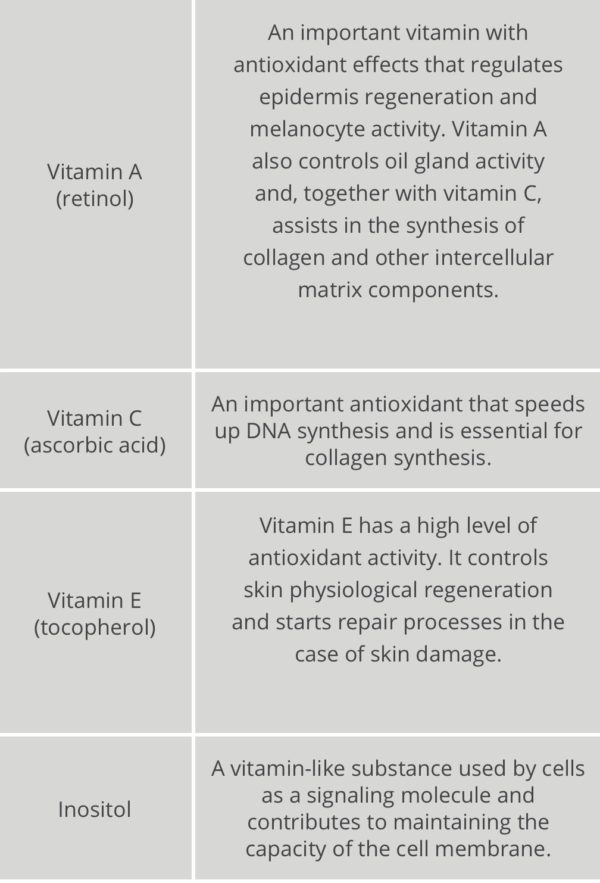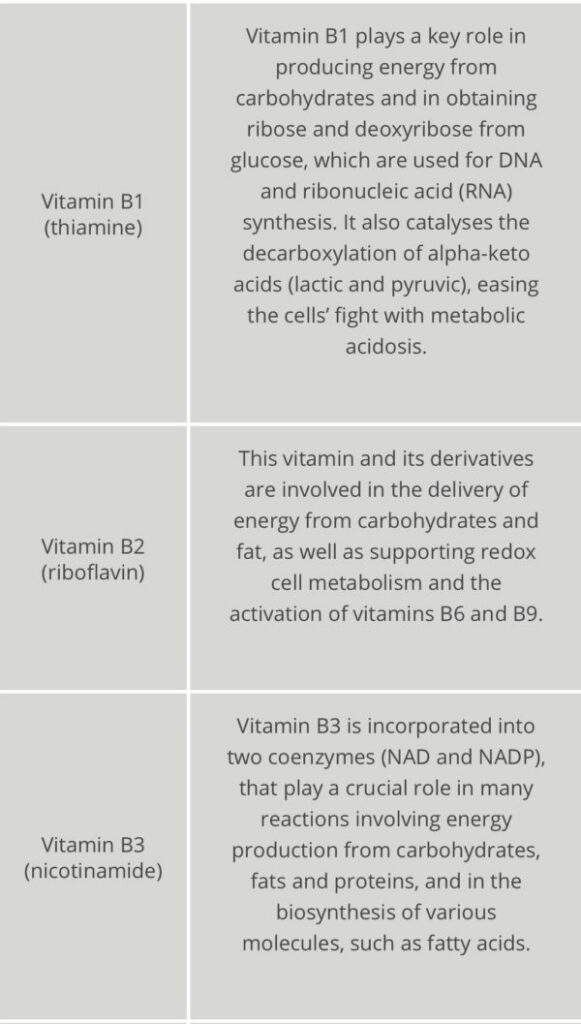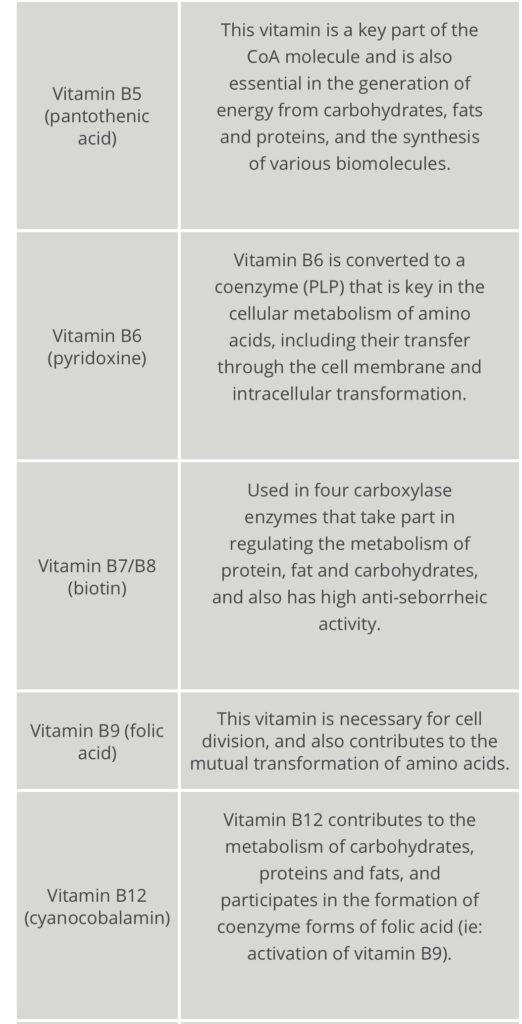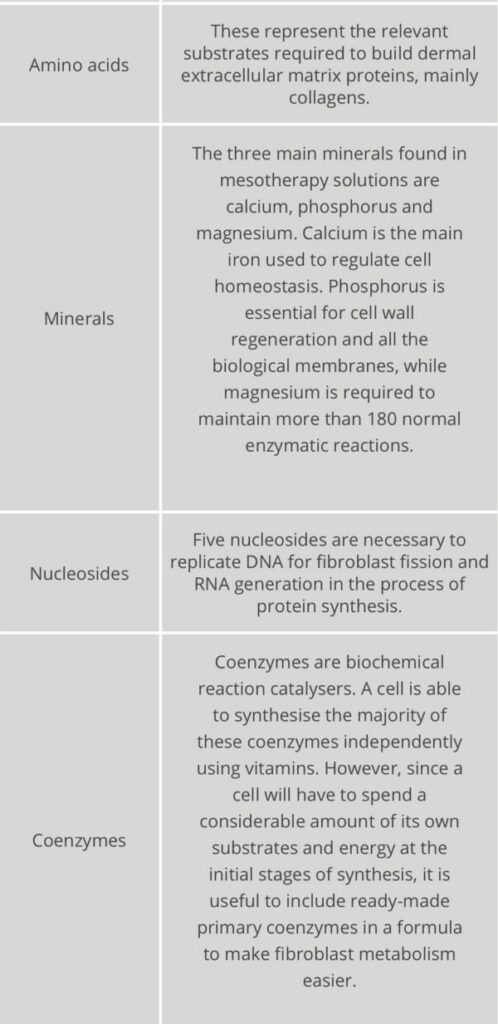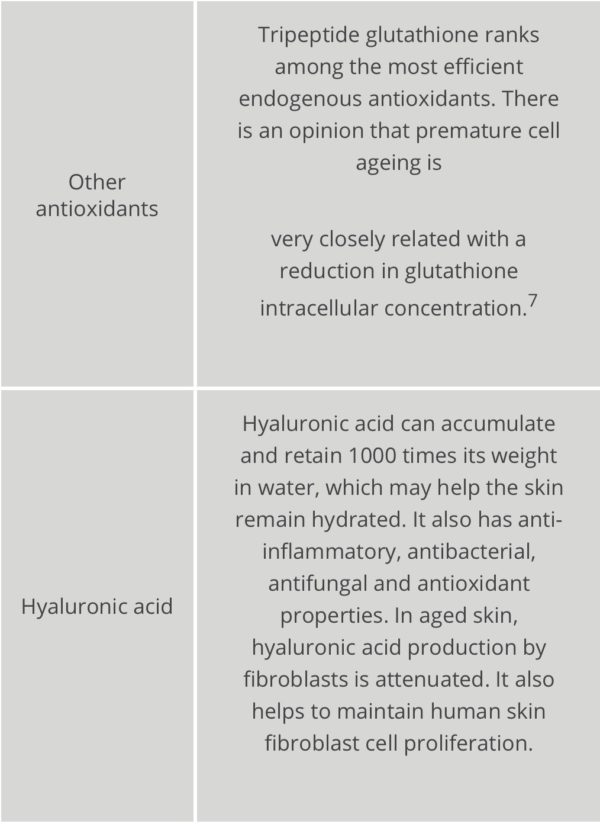Protocols
How does vitamins and minerals used in Mesotherapy works and what protocols to use according to that?
Our main concern in medical aesthetics is the effectiveness of the so-called poly-revitalising solutions employed in mesotherapy and how they affect our skin when we apply them.
Each of the components used in mesotherapy solutions, such as the New Cellular Treatment Factor Hyaluronic Acid (NCTF HA) that has been used in numerous clinical studies into the efficacy of poly-revitalising solutions, has a physiological effect on the skin cells.
The main principle is that ageing skin is supplied with various substrates that are key to the adequate functioning of the fibroblasts. These include vitamin, mineral elements, amino acids, nucleotides, coenzymes and antioxidants, as well as hyaluronic acid.
Fibroblasts work more efficiently if provided with the nurturing environment in which they can function properly and the substances used in those components aim to create such an environment. So as impact of the different delivery methods. Both young skin and aged skin can be targeted with mesotherapy.
In young skin it aims to keep the fibroblasts active and maintain a patient’s youthful appearance, tonicity and hydration, while in aged skin the treatment aims to aid hydration, reduce the anti-radical action and fight against the effect of oxidative stress including use of multiple functional application cause some reversibility effect.
The results of mesotherapy are progressive and accumulative and the advantage is that it is noninvasive and non-traumatic apart from minimal trauma by delivery method is actually beneficial. We usually recommend patients undergo six sessions of mesotherapy, two weeks apart, but some patients, who may have time available and the funds allow, want to have quicker results.
For such patients we can perform one session per week and, usually, within three sessions we will notice an enormous difference. After completing the six sessions, we always recommend 3 sessions twice per year to maintain the results. It is also worth mentioning that mesotherapy is a treatment that will provide the best results when combining it with other treatments such as peels and lights.
Short-term side effects such as mild pain, redness, swelling, and bruising are relatively common and an expected consequence of the injections themselves, but serious complications are rare and sensitivity to the treatment wears off with time. Disinfecting the skin before the treatment is important to avoid possible infections.
